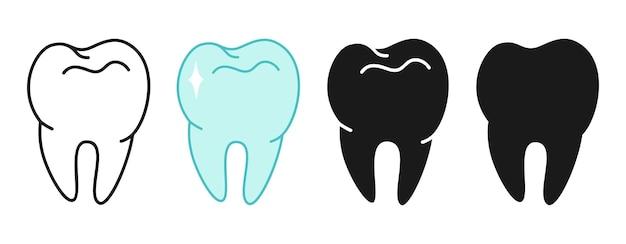As a chemistry student or researcher, you must have come across the terms molar and millimolar units, which are fundamental in the field of chemistry. These units are used to describe the concentration of chemical solutions and are crucial in determining the reactivity of substances. In this blog post, we will define and explain these terms in detail while also covering essential concepts such as converting micromolar to molar and molar to millimolar units. Additionally, we’ll provide answers to common questions such as “What is 0.05 m in millimolar?” and “How to convert 1 molar to 100 millimolar?”. Let’s dive in!
Making Sense of Molar and Millimolar: A Layman’s Guide
If you’re anything like me, you might have felt a bit confused in high school chemistry class when your teacher first introduced you to the concept of molar and millimolar. “What does it even mean?” you might have thought. Fear not, my friend! In this section, we’ll give you a straightforward explanation of these terms without boring you with too much scientific jargon.
The Mole- What Exactly Is It
Contrary to its cute and cuddly lookalike, the mole in chemistry, is far from being adorable. The mole is essentially a unit of measurement used to quantify the amount of a given substance. It’s a lot like how you measure things like sugar or flour in cups or grams while baking, except this time, we’re talking about chemical elements and compounds. A mole of any substance is always the same amount, no matter what its molecular weight may be. Just like a dozen always means 12 items, a mole always means 6.02 × 10^23 particles. Still with me?
Millimolar- A Smaller Yet Mighty Unit
While a mole is a massive unit of measurement, millimolar is much smaller, as the prefix ‘milli’ suggests. It’s one-thousandth of a mole, so it’s especially useful when dealing with relatively smaller amounts of substances. Think about it like ordering in a café: you might call out for “a grande coffee” if you’re feeling thirsty, but if you only need a small jolt of caffeine, you’re likely to ask for “a shot of espresso” instead.
How Do They Relate to Each Other
To understand the relationship between molar and millimolar, let’s take a quick refresher on conversions. We know that a mole equals 6.02 × 10^23 particles, while a millimole is just one-thousandth of that. If you do the math, a millimole is equivalent to 6.02 × 10^20 particles. When we express measurements in millimoles instead of moles, we’re essentially breaking down a whole unit into smaller, more manageable components.
Molar and Millimolar: Which One Should You Use
So, are molar or millimolar better? Well, it really depends on what you’re trying to achieve. Molar is ideal for large-scale experimental designs, where you need more significant quantities of substances to be able to analyze them accurately. Whereas millimolar is more helpful for smaller-scale experiments where you need higher precision and more control over your measurements. Basically, molar is like using a sledgehammer, while millimolar is like using a scalpel.
In conclusion, while molar and millimolar might have sounded confusing and intimidating at first, I hope we’ve cleared the air and helped you make a bit more sense of these terms. Whether you’re brewing a cup of coffee or conducting a complex scientific experiment, the right unit of measurement can make all the difference.
Understanding Millimolar Units
Millimolar units are essential when it comes to measuring concentrations in a solution. Let’s say you’re in a lab, and you need to calculate how much of a certain substance is present in a liter of solution. You could use some fancy-pants scientific terms like moles or micromoles, but come on now. This isn’t the Olympics of smart people. We can keep it simple, so we go with millimoles.
What is a millimole anyways
I’m glad you asked. A millimole is just like a mole, but 1/1000th of it. So if you had a mole of puppies, that would be, like, a lot of puppies. But if you had a millimole of puppies, that’s still quite a few, but you could probably handle it.
What are millimolar units used for
Besides counting puppies, millimolar units have many practical uses. For example, they’re typically used to measure the concentration of dissolved solutes in liquid solutions such as blood plasma or urine. They can also be used in biochemical researches related to physiological processes and drug discovery.
How are millimolar units abbreviated
Thankfully, the scientific community has spared us all some headaches and shortened millimolar units to “mM”. It’s much easier to write it out this way, and your fingers will thank you for it.
Wrapping up
So, now you know what a millimolar unit is, what they’re used for, how to abbreviate them, and most importantly, how they relate to adorable puppies. You’re practically a genius now. Keep an eye for part two of our series on the ultimate guide to molar millimolar, where we’ll dive into the exciting world of molar units.
Micromolar to Molar
So, you’ve got a solution, and you want to measure its concentration. You happen to know that it’s somewhere between micromolar to molar, but what does that even mean? Let’s break it down and have some fun while doing it.
The Metric System is Your Friend
First things first, we need to understand the metric system. The basic unit of measure is the gram (g), which is used to measure mass. The liter (L) is used to measure volume, and the mole (mol) is used to measure the amount of a substance.
From Small to Big
When we’re dealing with concentrations, we’re usually measuring the amount of a substance in a given volume. One micromolar (μM) is equivalent to one millionth of a mole per liter. That’s a pretty small concentration! It’s like trying to find a needle in a haystack.
If we were to break it down even further, we’d end up with nanomolar (nM) or picomolar (pM) concentrations. We’re talking about billionths or trillionths of a mole per liter. At that point, we might as well give up and say that there’s nothing there.
Going Big
On the other end of the spectrum, we have molar (M) concentrations. One molar is equivalent to one mole per liter. That’s a lot of stuff in a relatively small space! To put it in perspective, one molar solution of salt would be incredibly salty, and one molar solution of acid would be incredibly acidic. You wouldn’t want to touch either of those without the proper safety equipment.
Finding Your Way
Now that we know what these concentrations mean, how do we measure them? Well, you could use a spectrophotometer or a titration setup to measure the absorbance or the volume of your solution, respectively. Alternatively, you could use a simple equation that relates concentration, moles, and volume.
If you’ve got a micromolar solution, you can convert it to molar by dividing it by 1,000. So, 100 μM is equivalent to 0.1 mM. If you’ve got a molar solution, you can convert it to micromolar by multiplying it by 1,000. So, 0.5 M is equivalent to 500 μM.
Wrap Up
Congratulations! You made it through the world of concentrations and measurements. Now, you can impress your friends with your newfound knowledge of micromolar and molar solutions. Just don’t try to drink a molar solution of acid, okay? Trust us on this one.
Molar into Millimolar: A Conversion Worth Knowing
If you’re a science student, you know that converting between units is no joke. One of these essential unit conversions is molar to millimolar, and it can get complicated. But do not fret. In this subsection, we will dive into the nitty-gritty of this conversion with a dose of humor.
Molar and Millimolar Defined
Before we jump into the conversion, let’s break down the meaning of molar and millimolar. A mole is a unit of measurement of a substance that contains a definite number of particles (6.02 x 10^23 to be exact). A molar solution is a substance that contains one mole of the solute in one liter of the solution.
On the other hand, millimoles per liter (mmol/L) or millimolar concentration is a unit used to measure the concentration of a solution. It is equal to one-thousandth of a mole per liter.
The Conversion Magic
Now, here comes the fun part. Converting from molar to millimolar involves multiplying the molar concentration by 1000.
Let’s say you have a molar concentration of 0.25M. To convert it into millimolar, multiply 0.25M by 1000.
0.25M x 1000 = 250 mmol/L
And that’s it! You have successfully converted from molar to millimolar.
The Inverse Conversion
If you need to do the inverse conversion from millimolar to molar, all you have to do is divide by 1000. Simple right?
Let’s take an example. If you have a millimolar concentration of 500mmol/L, divide it by 1000 to obtain the molar concentration.
500mmol/L ÷ 1000 = 0.5M
Why You Should Care
Understanding molar and millimolar conversions is crucial for various laboratory experiments. From titrations to enzyme kinetics, this conversion is crucial for calculating concentrations accurately.
Plus, if you’re planning to be a scientist, it’s a cool conversion to know, and you might impress your peers during lab sessions.
Wrapping Up
There you have it, the molar to millimolar conversion made easy and humorous. Remember, to convert from molar to millimolar, multiply by 1000, and to convert from millimolar to molar, divide by 1000. Keep these conversion factors in mind, and you’ll be a pro in no time.
What is 0.05 m in millimolar
So, you’ve got this number, 0.05 m, and you’re wondering what it is in millimolar. Fear not my friend, I’ve got your back. As a self-proclaimed chemistry nerd, I live for questions like this. Now, let’s break down what exactly 0.05 m means and convert it to the millimolar unit.
Breaking Down the Terminology
Before we dive in, let’s break down the terminology. “M” stands for molarity, which is a unit of concentration used in chemistry. Specifically, molarity measures the number of moles of solute per liter of solution. If that makes no sense, don’t worry, it’s a bit technical. Just know that molarity is a way to measure how much of a particular substance is present in a solution.
Converting to Millimolar
Now, the tricky part: converting 0.05 m to millimolar. “Millimolar” is simply a unit of concentration that’s 1/1000th of a molar. To convert from molarity to millimolar, all you have to do is multiply your molarity by 1000. So, 0.05 m in millimolar is:
0.05 m x 1000 = 50 mM
Congratulations, you’ve just converted molarity to millimolar. Now, wasn’t that fun? Okay, maybe not the most exciting thing in the world, but hey, it’s knowledge that could come in handy someday.
Recap
Just to recap, molarity is a unit of concentration that measures the number of moles of a solute per liter of solution. Millimolar is simply a unit of concentration that’s 1/1000th of a molar. To convert from molarity to millimolar, you multiply your molarity by 1000. So, 0.05 m in millimolar is 50 mM.
Now that you’ve got that down, go flex your newfound knowledge to your friends and see how impressed they are. You know what they say: knowledge is power (or at least mildly interesting).
How to Convert 1 Molar to 100 Millimolar
Do you often find yourself confused with the terms molar and millimolar? Fear not, dear reader! Here’s a simple guide to help you convert 1 molar to 100 millimolar.
Understanding Molar and Millimolar
Before we dive into the conversion process, let’s first understand what molar and millimolar mean. Molar is the unit of measurement for concentration, which refers to the amount of solute present in a given volume of a solution. One mole of solute is equal to the molecular weight of the solute in grams. Millimolar, on the other hand, is one-thousandth of a mole per liter (mmol/L). In simpler terms, 1 millimolar is equal to 0.001 moles per liter.
The Conversion Process
Converting 1 molar to 100 millimolar may sound complicated, but it’s actually quite simple. All you need to do is multiply the molar concentration by 100.
100 millimolar = 1 molar x 100
So there you have it, folks – it’s as easy as pie. However, it’s important to note that the conversion process may vary depending on the concentration unit used in the given solution.
Now that you know how to convert 1 molar to 100 millimolar, you can apply this knowledge to your chemistry experiments or impress your friends with your newfound skills. Remember, practice makes perfect, and with time, you’ll be converting molar and millimolar concentrations like a pro.


